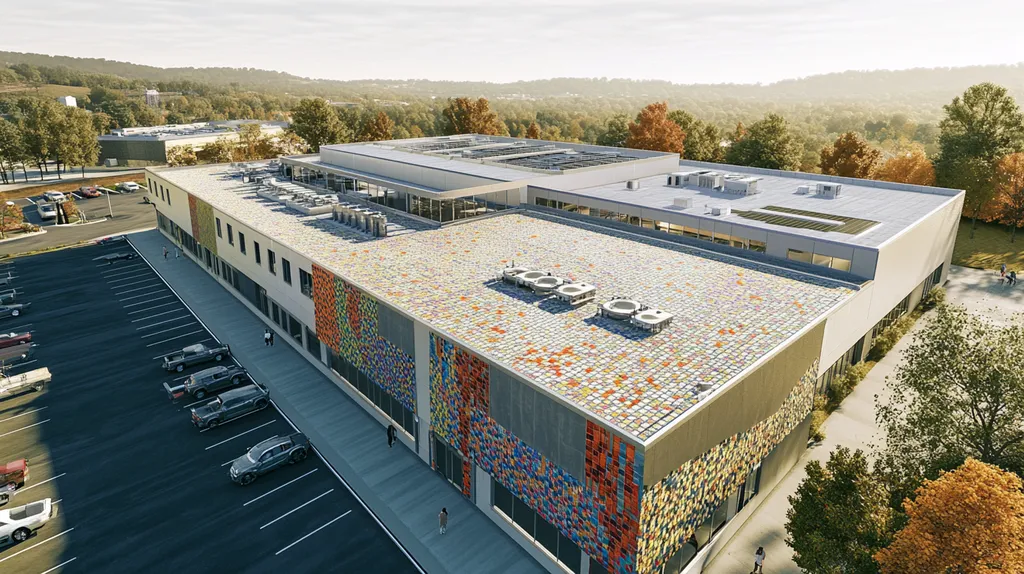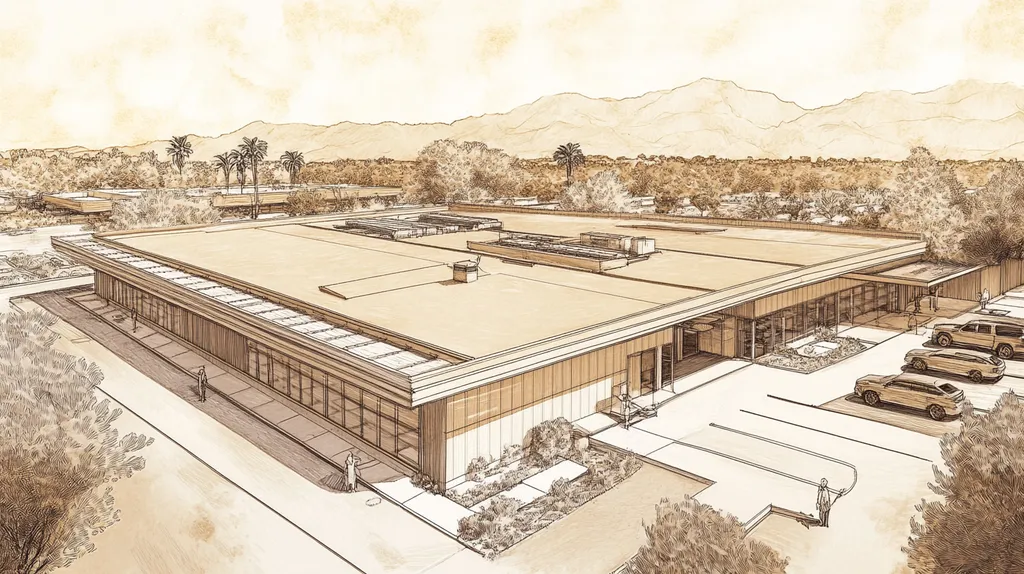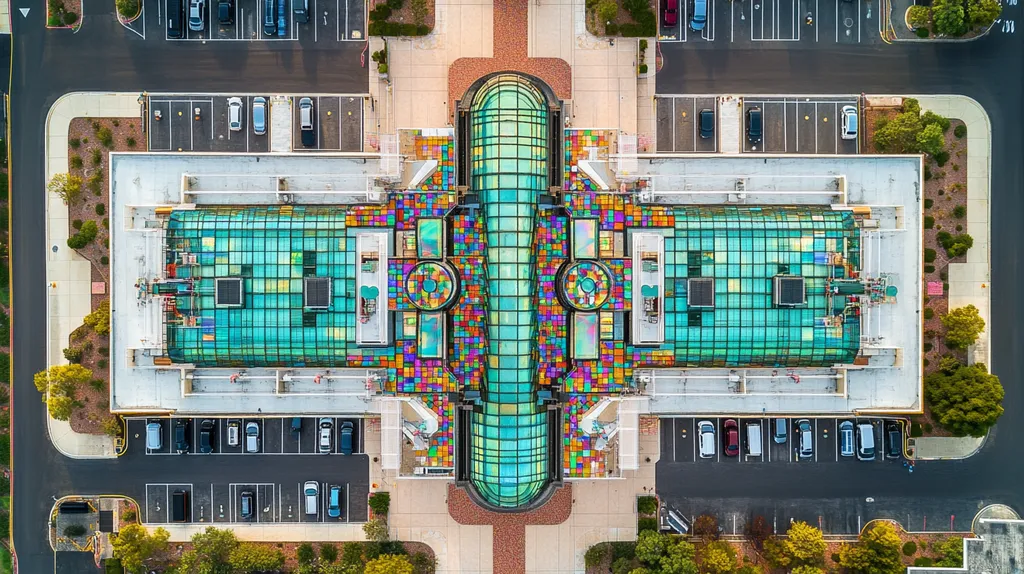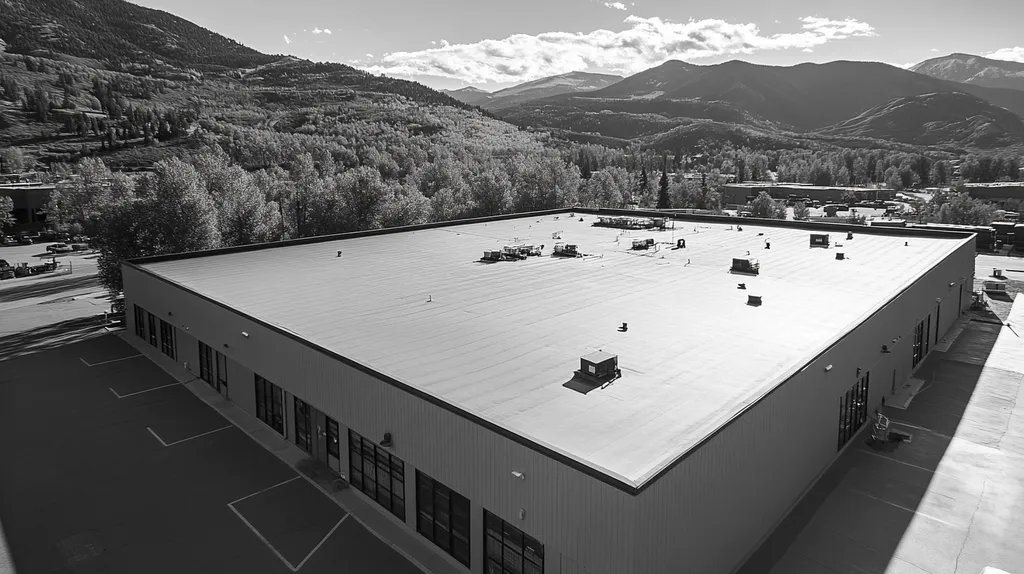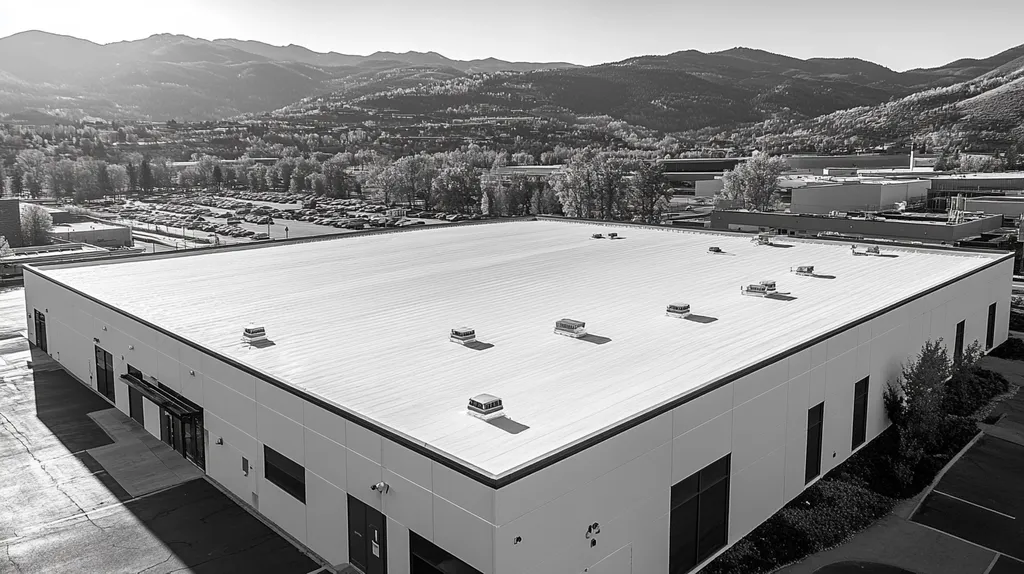Welcome to today’s Battle Royale featuring two roofing heavyweights: “Drone Inspections” in the east corner versus “Infrared Scanning” in the west!
Tonight’s showdown pits these contenders against each other across six punishing rounds designed to test every aspect of their performance for Industrial Roof Damage Inspection.
At stake? Millions in potential costs, decades of building protection, and the critical performance demands of modern commercial and industrial facilities.
Our professional judging panel will evaluate each round on technical merit, real-world performance, and value delivery. After all six rounds, we’ll declare our ultimate champion.
Ladies and gentlemen, facility managers and building owners… it’s time to rumble!
ROUND 1: INITIAL COSTS & INSTALLATION
When it comes to industrial roof inspections, the financial implications of choosing the wrong method can be severe. Recent industry data shows that delayed or inaccurate roof assessments can increase repair costs by up to 300% due to undetected damage progression. The stakes are particularly high for facilities exceeding 20,000 square feet, where comprehensive inspection methods become critical.
Material Expenses
The initial investment in drone technology typically ranges from $2,000 to $15,000, depending on the sophistication of the equipment. This includes high-resolution cameras, thermal sensors, and specialized software for data analysis.
Infrared scanning equipment, while also representing a significant investment, generally costs between $5,000 and $10,000 for commercial-grade systems. The technology requires fewer peripheral components but demands regular calibration and maintenance.
While both methods require substantial upfront investment, infrared scanning equipment often proves more cost-effective for single-facility operations. For this reason, the “ADVANTAGE” goes to infrared scanning in terms of material expenses.
Installation Complexity
For an average commercial roof of 20,000 square feet, a drone inspection can be completed in about an hour, requiring minimal setup time and personnel. The process involves simple pre-flight checks and automated flight pattern programming. (source: American WeatherStar)
Infrared scanning demands more extensive preparation, including evening or night-time scheduling when temperature differentials are optimal. The setup requires careful positioning of equipment and multiple scanning passes to ensure accuracy.
Given the streamlined nature of drone deployment and minimal disruption to facility operations, drone inspections claim the “ADVANTAGE” for installation complexity.
Project Timeline
Drone inspections can typically be completed and analyzed within a single business day. The rapid data collection and automated processing allow for quick turnaround on inspection reports.
Infrared scanning often requires specific environmental conditions and can take several days to complete properly. The analysis phase also tends to be longer due to the need for careful interpretation of thermal readings.
The efficiency and speed of drone inspections make them the clear winner in this category, earning them the “ADVANTAGE” for project timeline considerations.
ROUND 1 WINNER: DRONE INSPECTIONS
ROUND 2: DURABILITY & LIFESPAN
In industrial roofing, the stakes of inspection method durability directly impact facility protection and budget allocation. Recent data shows that inadequate inspection approaches can reduce a roof’s functional lifespan by up to 40% through missed early-stage problems. For facilities with extensive roof areas, selecting the right long-term inspection strategy becomes crucial for maintaining structural integrity and preventing catastrophic failures.
Material Resilience
Industrial roof inspections must withstand harsh environmental conditions while delivering consistent results. Drone technology offers remarkable durability, with modern commercial drones rated for operation in winds up to 25mph and temperatures from -4°F to 104°F.
Infrared scanning requires optimal temperature differentials to function effectively, making it highly sensitive to environmental conditions. Many inspections begin with infrared scans to detect hidden moisture, but their effectiveness diminishes after storms or cleaning. (source: Procore)
Given their superior environmental adaptability and consistent performance across varying conditions, drone inspections claim the ADVANTAGE in material resilience.
Service Life Projections
Accurate service life projections depend on comprehensive data collection and analysis. Drone systems combine visual, thermal, and multispectral imaging to create detailed baseline documentation that tracks degradation patterns over time.
Infrared scanning provides valuable moisture infiltration data but lacks the broad spectrum analysis needed for accurate lifespan prediction. This limitation can lead to incomplete assessment of a roof’s overall condition and remaining service life.
The comprehensive data collection capabilities of drone systems earn them the ADVANTAGE for service life projections.
Long-Term Maintenance Impact
Effective maintenance strategies require consistent monitoring and early problem detection. Drone inspections enable regular, non-invasive monitoring that creates a historical record of roof condition changes without risking surface damage.
While infrared scanning excels at detecting subsurface moisture issues, its application can be limited by weather conditions and time constraints. This inconsistency may result in delayed maintenance responses and accelerated deterioration.
The ability to perform frequent, non-destructive inspections gives drone technology the ADVANTAGE in long-term maintenance impact.
ROUND 2 WINNER: DRONE INSPECTIONS
ROUND 3: PERFORMANCE FACTORS
In industrial roofing, the difference between proactive maintenance and costly emergency repairs often comes down to inspection performance. Recent industry data shows that facilities with inadequate inspection protocols face up to 40% higher repair costs and significantly reduced roof lifespans. For large industrial complexes, choosing the right inspection method can mean the difference between minor repairs and complete roof replacement.
Speed and Efficiency
Rapid assessment capabilities directly impact both maintenance costs and facility operations. Industrial facilities cannot afford extended downtime for comprehensive roof evaluations, making inspection speed a critical factor in method selection.
Drone inspections can cover up to 100,000 square feet of roof area in under two hours, providing real-time visual data and immediate problem identification. Their autonomous flight patterns ensure consistent coverage while minimizing human error.
Infrared scanning requires specific environmental conditions and typically takes 2-3 times longer to complete the same area. While thorough, the process demands careful setup and multiple passes to ensure accurate readings.
Each type of roof inspection requires different approaches and timeframes. For example, periodic construction inspections focus on specific elements like fastener installation, while comprehensive scans examine overall condition. (source: Procore)
Given their superior speed and minimal operational impact, drone inspections claim the ADVANTAGE in efficiency.
Accuracy and Detailing
Inspection accuracy directly influences maintenance planning and budget allocation. Missing subtle signs of deterioration can lead to exponentially higher repair costs down the line.
Drone systems utilize high-resolution cameras and automated flight patterns to capture detailed surface imagery. However, they may miss subsurface issues that aren’t visible from above.
Infrared scanning excels at detecting hidden moisture intrusion and insulation failures through temperature differential analysis. This capability proves crucial for identifying problems before they manifest as visible damage.
The superior subsurface detection capabilities of infrared scanning earn it the ADVANTAGE in accuracy.
Cost-Effectiveness Over Time
Long-term inspection costs significantly impact facility maintenance budgets. The true value of an inspection method lies not just in its immediate expense, but in its ability to prevent costly repairs.
Drone inspections offer lower per-inspection costs and require minimal staff resources. However, their limited subsurface detection capabilities may allow hidden problems to develop into major issues.
Infrared scanning’s higher upfront costs are offset by its superior problem detection capabilities. Early identification of moisture infiltration and insulation failures can prevent expensive structural damage.
The prevention of costly repairs through early problem detection gives infrared scanning the ADVANTAGE in cost-effectiveness.
ROUND 3 WINNER: INFRARED SCANNING
ROUND 4: MAINTENANCE REQUIREMENTS
In industrial roofing, maintenance requirements can make or break an inspection program’s effectiveness. Industry data shows that inadequate maintenance protocols lead to 45% higher lifetime costs and premature roof replacement. For facilities with extensive roof areas, selecting an inspection method that enables consistent, thorough maintenance becomes crucial for protecting capital investments and preventing catastrophic failures.
Equipment Maintenance Requirements
Drones are a great option for accessing difficult or dangerous roof areas, requiring minimal physical maintenance beyond battery replacement and firmware updates. Regular calibration checks ensure accurate data collection, while automated pre-flight systems reduce the risk of equipment failure. (source: Beacon Building Products)
Infrared cameras demand precise calibration and frequent sensor maintenance to maintain accuracy. The sensitive nature of thermal imaging equipment requires careful handling and storage in controlled environments.
Given their robust design and lower maintenance demands, drone systems claim the ADVANTAGE in equipment maintenance requirements.
Operational Support Needs
Drone operations require initial pilot training and periodic skill updates. However, once trained, operators can conduct inspections with minimal additional support staff.
Infrared scanning demands specialized technicians and support personnel for each inspection. The complexity of thermal data interpretation requires ongoing training and certification maintenance.
The streamlined operational requirements of drone systems earn them the ADVANTAGE in support needs.
System Reliability Factors
Drone inspection systems demonstrate consistent performance across varying weather conditions. Their modular design allows for quick component replacement and minimal downtime.
Infrared equipment shows higher sensitivity to environmental factors and requires more frequent recalibration. System reliability depends heavily on maintaining optimal operating conditions.
The superior reliability and reduced maintenance downtime of drone systems secure them the ADVANTAGE in system reliability.
ROUND 4 WINNER: DRONE INSPECTIONS
ROUND 5: SUSTAINABILITY CREDENTIALS
Environmental responsibility has become a critical factor in industrial roofing decisions, with facilities facing increasing pressure to reduce their carbon footprint. Recent industry data shows that inefficient inspection methods can increase energy waste by up to 30% through missed thermal leaks and moisture infiltration. For large industrial complexes, choosing sustainable inspection approaches impacts both environmental compliance and operational costs.
Environmental Impact
Industrial roof inspections traditionally required extensive equipment mobilization and energy-intensive operations. Modern inspection methods must balance effectiveness with environmental responsibility to meet increasingly stringent sustainability requirements.
Drone inspections operate with minimal environmental impact, using rechargeable batteries and requiring no heavy machinery or access equipment. Their ability to complete comprehensive surveys with minimal resource consumption aligns perfectly with green building initiatives.
Infrared scanning requires significant power consumption and specialized thermal imaging equipment produced through resource-intensive manufacturing. The need for specific environmental conditions often results in multiple site visits, increasing the carbon footprint of each inspection.
The minimal environmental impact and resource efficiency of drone operations earns them the ADVANTAGE in this category.
Resource Efficiency
Infrared scans can detect hidden moisture issues that contribute to energy waste, but timing restrictions often necessitate multiple inspection attempts. The process requires specific temperature differentials and environmental conditions to produce accurate results. (source: Procore)
Drone inspections maximize resource efficiency through rapid deployment and comprehensive single-pass coverage. Their ability to collect multiple data types in one flight reduces the need for repeated site visits and additional equipment deployment.
The consistent performance and minimal resource requirements of drone systems secure them the ADVANTAGE in resource efficiency.
Green Technology Integration
Modern facility management demands inspection methods that support broader sustainability initiatives. The integration of green technologies directly impacts both environmental compliance and operational efficiency.
Drone systems incorporate rapidly evolving sustainable technologies, including solar-charged batteries and recycled materials. Their modular design allows for easy upgrades as green technology advances, extending equipment lifespan and reducing waste.
Infrared equipment, while effective, relies on conventional power sources and contains components that are difficult to recycle. The specialized nature of thermal imaging technology limits opportunities for sustainable upgrades.
The superior adaptability and sustainable design elements of drone systems earn them the ADVANTAGE in green technology integration.
ROUND 5 WINNER: DRONE INSPECTIONS
ROUND 6: SPECIALIZED APPLICATIONS
In industrial roofing, specialized inspection requirements can make or break facility operations. Recent data shows that 35% of commercial roof failures occur in areas requiring unique inspection approaches, with damages averaging $150,000 per incident. For facilities with complex roofing systems, choosing the right inspection method for specialized applications becomes critical for maintaining structural integrity and preventing catastrophic failures.
Complex Structure Assessment
Industrial facilities often feature intricate roofing designs with multiple levels, penetrations, and specialized equipment installations. These complex structures demand inspection methods that can thoroughly evaluate hard-to-reach areas and unusual configurations.
Drone inspections excel at navigating complex roof structures, providing comprehensive visual data from multiple angles. Their ability to access difficult areas and maintain consistent documentation makes them invaluable for complicated roof designs.
Infrared scanning struggles with complex structures, as equipment positioning and line-of-sight requirements can limit access to certain areas. Multiple setups are often necessary to achieve complete coverage.
Given their superior maneuverability and comprehensive coverage capabilities, drone inspections claim the ADVANTAGE in complex structure assessment.
Moisture Detection Capabilities
Hidden moisture represents one of the most destructive forces in industrial roofing, particularly in specialized applications where water infiltration can damage sensitive equipment or processes. Early detection becomes crucial for preventing extensive damage.
Drone systems, while excellent for visual inspection, have limited capability in detecting subsurface moisture issues. Even with thermal cameras, their rapid movement can miss subtle temperature variations indicating moisture problems.
Infrared scanning excels in identifying temperature discrepancies that reveal water buildups, particularly during morning heating or evening cooling periods. This precision in moisture detection proves invaluable for maintaining specialized roofing systems. (source: Procore)
The superior moisture detection capabilities earn infrared scanning the ADVANTAGE in this category.
Environmental Adaptability
Specialized industrial applications often require inspections under varying environmental conditions. The ability to perform reliable assessments across different weather patterns and temperatures directly impacts maintenance scheduling and effectiveness.
Drone inspections maintain consistent performance across a wide range of environmental conditions. Their adaptability allows for reliable data collection in various weather scenarios, though extreme conditions may limit operations.
Infrared scanning requires specific environmental conditions to produce accurate results. Temperature differentials and weather patterns significantly impact scanning effectiveness, limiting inspection windows.
With their broader operational range and consistent performance, drone inspections secure the ADVANTAGE in environmental adaptability.
ROUND 6 WINNER: DRONE INSPECTIONS
AND THE WINNER IS…
After six grueling rounds of technical evaluation, we have our verdict…
With a dominant 5-1 performance across multiple categories, DRONE INSPECTIONS emerges as our undisputed champion in the battle for industrial roof inspection supremacy!
The victor’s impressive combination of speed, efficiency, and adaptability proved devastating, particularly in rounds focusing on maintenance requirements and sustainability credentials. Its ability to deliver comprehensive coverage while minimizing operational disruption sealed the victory.
But don’t count INFRARED SCANNING out completely! This seasoned contender showed its mighty punch in Round 3, demonstrating unmatched prowess in subsurface moisture detection. For facilities where hidden water infiltration poses the greatest threat, infrared scanning remains a formidable specialist.
IMPORTANT NOTICE: Every facility faces unique challenges based on local climate, building design, and operational requirements. This analysis provides general guidance but cannot account for all variables. Property owners should consult qualified roofing professionals who can evaluate their specific situation before making inspection method decisions.
Ladies and gentlemen, remember: In the high-stakes world of industrial roofing, victory doesn’t always go to the strongest contender – it goes to the inspection method that best matches your facility’s specific requirements. Choose your champion wisely!
FREQUENTLY ASKED QUESTIONS
Q. What are the initial costs of commercial roof inspections?
A. The initial costs vary between methods, with drone technology ranging from $2,000 to $15,000, while infrared scanning equipment costs between $5,000 and $10,000. Despite these investments, understanding the financial implications of both approaches is essential, particularly for expansive facilities needing thorough assessments to avoid costly repairs.
Q. How does the durability of industrial roof inspection methods compare?
A. Drone inspections offer remarkable durability and can operate effectively in challenging conditions, while infrared scanning’s reliability is contingent on environmental factors. Choosing an inspection method that withstands harsh weather helps maintain roofing integrity and supports long-term maintenance planning.
Q. What are the performance factors for commercial roof inspections?
A. Speed, accuracy, and efficiency are critical performance factors. Drone inspections quickly cover expansive areas and provide real-time data, while infrared scanning excels in identifying subsurface moisture issues. Selecting an inspection method based on these parameters ensures effective maintenance and reduces potential roof failures.
Q. What maintenance requirements are associated with industrial roof inspections?
A. Drone systems have minimal maintenance needs, primarily requiring battery replacements and firmware updates. In contrast, infrared scanners need frequent calibration and maintenance to preserve accuracy. Choosing a method that fits your maintenance capabilities can optimize inspection effectiveness and reduce long-term costs.
Q. How do sustainability credentials impact roof inspection choices?
A. Sustainable practices can reduce energy waste by minimizing extensive equipment mobilization. Drone inspections, reliant on rechargeable batteries and minimal resource consumption, align with green building initiatives, while infrared scanning may lead to higher energy consumption and emissions. Evaluating sustainability credentials can enhance environmentally responsible facility management.
Q. How do specialized applications affect industrial roof inspections?
A. Specialized roofing systems often require unique inspection techniques. Drone inspections excel in assessing complex structures, while infrared scanning is superior in detecting moisture issues. Understanding the specific needs of your roofing system guides the choice of inspection method that protects structural integrity and prevents costly damage.
Q. What factors should be considered when scheduling roof inspections?
A. When scheduling inspections, consider weather conditions, operational downtime, and the specific capabilities of the chosen method. Drones can inspect quickly and efficiently without disturbing business activities, while infrared scans may need optimal temperature conditions for accuracy. Planning ahead ensures effective inspections without operational disruption.

